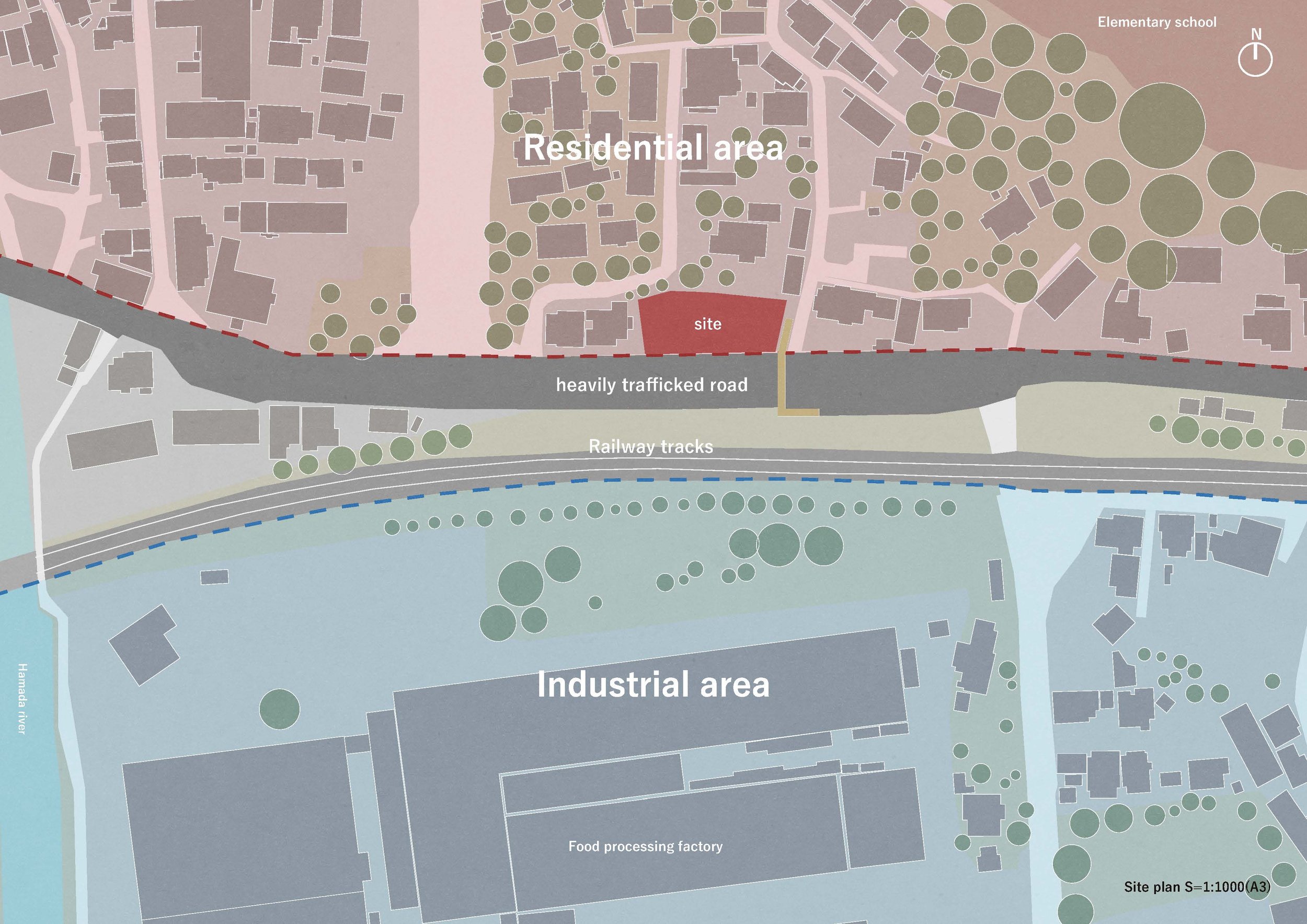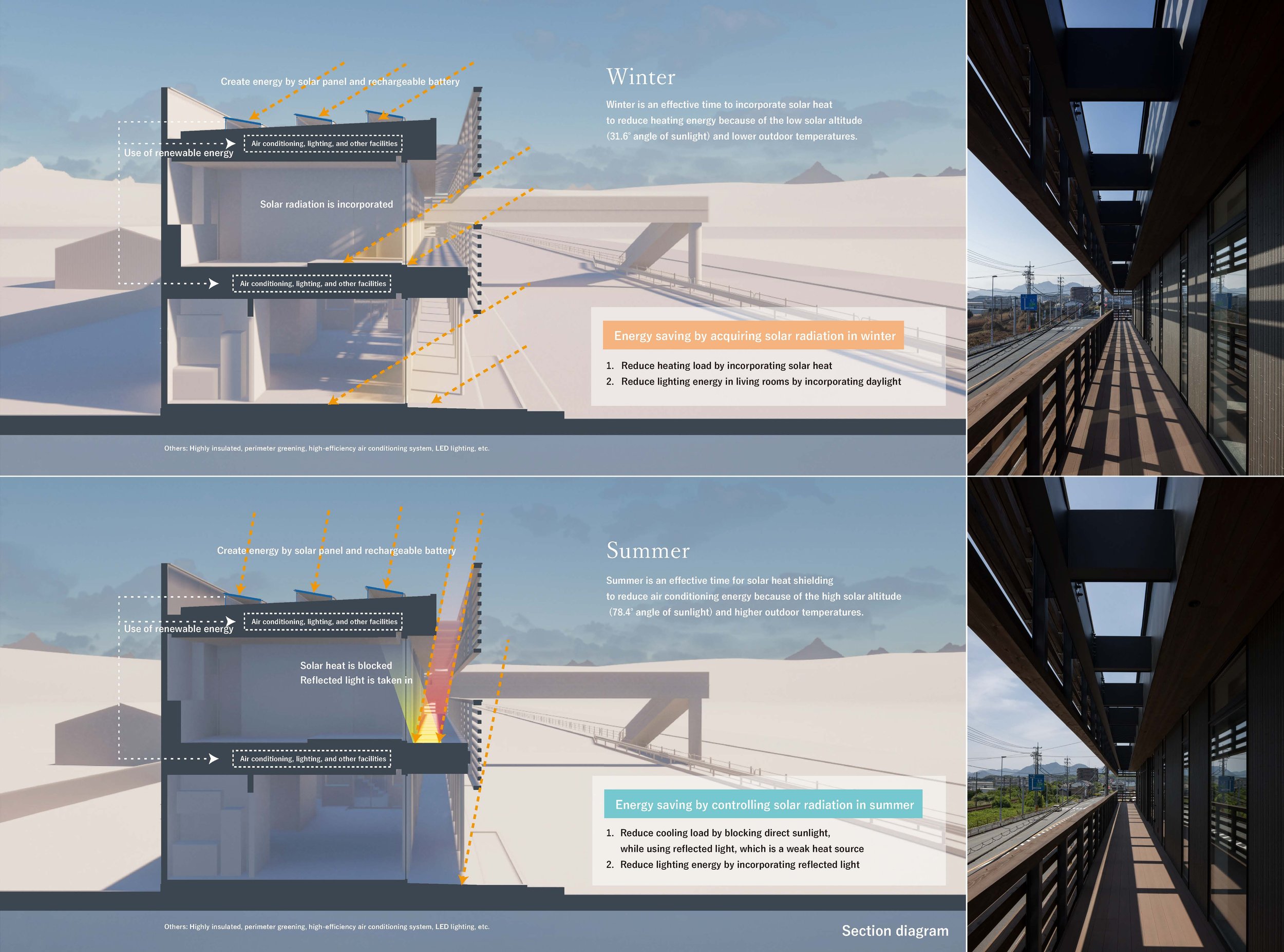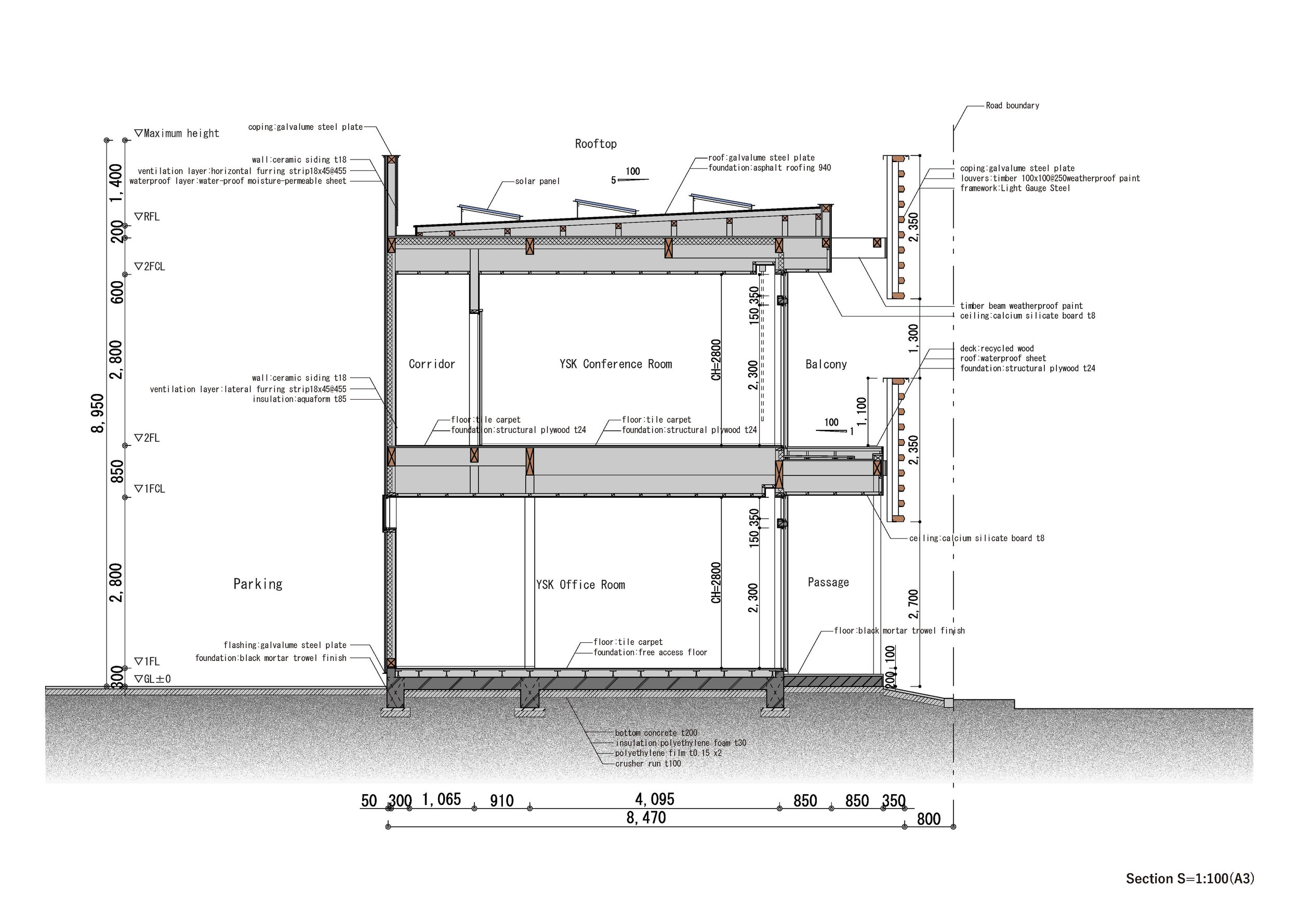RIVAL Office: A Runway for Creativity designed by KAMITOPEN Co., Ltd.
The TRIVAL office, designed by Kamitopen, transforms the traditional workspace into a dynamic environment where creativity, functionality, and aesthetic minimalism come together. The central feature of the design is the "Runway," which redefines how office spaces can facilitate interaction and workflow. In media production, TRIVAL's employees constantly engage with models and clients, conducting interviews and coordinating projects that require a seamless blend of creativity and efficiency.
The TRIVAL office, designed by Kamitopen, transforms the traditional workspace into a dynamic environment where creativity, functionality, and aesthetic minimalism come together. TRIVAL is a company that specializes in producing visual content, from advertising and web media to digital signage. They needed an office space that reflected their fast-paced, media-driven culture. Masahiro Yoshida, the visionary behind Kamitopen, aimed to design a space that mirrored the daily rhythms of TRIVAL's work environment while fostering a sense of energy and movement.
The central feature of the design is the "Runway," which redefines how office spaces can facilitate interaction and workflow. In media production, TRIVAL's employees constantly engage with models and clients, conducting interviews and coordinating projects that require a seamless blend of creativity and efficiency. This is where the runway concept comes into play - a literal and symbolic path that connects the entire office, linking the front entrance directly to the director's office in the back.
The runway is not just a passage; it serves as the heartbeat of the office. Located in the center of the space, it directs the flow of activity and sets the stage for the open, fluid nature of the office's daily operations. Flanked on either side by essential rooms such as meeting spaces, workstations, and creative areas, the runway is both a guiding framework and an architectural statement. It directs movement while visually anchoring the environment, making it functional and aspirational.
"Balancing Space and Privacy
Kamitopen incorporated natural elements into the design to create an open yet private atmosphere. Rows of strategically placed plants line the walkway, acting as organic barriers that subtly control the distance between those walking and those seated at their desks. This design choice achieves a delicate balance by promoting interaction while maintaining personal focus. The plants act as visual and physical buffers, creating zones that encourage productivity without isolating employees from each other, ensuring a thoughtful balance between openness and privacy.
The intentional minimalism of the material palette reinforces the sense of openness. Kamitopen chose a sleek, streamlined approach, using materials sparingly to ensure the focus remained on the spatial layout and the runway itself. By minimizing material usage, the design stays true to its core purpose: to create a sense of volume and lightness while emphasizing efficiency. This choice aligns with Kamitopen's broader design philosophy, which often focuses on spatial storytelling-a concept where the design of a space tells a story about its purpose and the people who use it-and a thoughtful approach to translating client needs into architectural forms.







The Emotional and Practical Impact
The TRIVAL office is not only visually appealing but also designed to prioritize the well-being and comfort of its employees. The layout, highlighted by the runway, encourages natural movement, making the environment feel more dynamic and less static. This design allows employees to move seamlessly from one area to another, promoting a sense of ease and comfort throughout the workday. The runway symbolizes the company's creative journey, inspiring employees to feel like they are stepping onto a stage, with each day offering new opportunities for engagement, collaboration, and innovation. The practical impact of the design ensures that the TRIVAL office is not just a workplace, but a space that employees eagerly anticipate being in.
Kamitopen's design aims to transform the office into a space that employees eagerly anticipate being in rather than just a workplace. The design promotes interaction without enforcing strict structure by prioritizing flow and flexibility. This approach effectively aligns with the fast-paced, media-centric world in which TRIVAL operates-a world where quick decision-making, constant communication, and adaptability are key. The design of the TRIVAL office reflects these aspects, creating an environment that supports the company's work culture.
A Workplace Reinvented
The TRIVAL project showcases Kamitopen's talent for combining functionality with a minimalist design, creating a spacious and cozy workspace. The runway serves as more than just a walkway; it symbolizes the connection of the company's operations, embodying the energy and movement that define TRIVAL's work. Through reimagining the use of space and incorporating innovative design elements, Kamitopen has designed an office that prioritizes fostering creativity and enhancing comfort and practicality.
The TRIVAL office represents a new paradigm in workplace design, where space, movement, and minimalism come together to create an environment that is functional and inspirational. Kamitopen has uniquely designed the space to reflect the essence of TRIVAL's creative work, enhancing the daily experiences of those who work there.
For more information, please visit: http://kamitopen.com/en/
*This project is one of the shortlisted project in the Sky Design Awards 2024 - Interior Design: Commercial and Office Division
Transitional Architecture: How Jindesign Co., Ltd. Reimagines Urban Boundaries with YSK Employment Office
In the realm of urban planning, Jindesign Co., Ltd. stands out with its unique approach to zoning. While zoning is a practical framework for city development, the real architectural challenge often lies in navigating the borders between vastly different zones. Jindesign Co., Ltd. tackles these transitions with sensitivity, crafting structures that bridge the gaps between spaces rather than heightening their disparities. Their design for the YSK Employment Office is a prime example of this philosophy in action. It showcases how architecture can mediate and create a fluid, livable urban experience that responds to its context while serving a higher social purpose.
In the realm of urban planning, Jindesign Co., Ltd. stands out with its unique approach to zoning. While zoning is a practical framework for city development, the real architectural challenge often lies in navigating the borders between vastly different zones. Jindesign Co., Ltd. tackles these transitions with sensitivity, crafting structures that bridge the gaps between spaces rather than heightening their disparities. Their design for the YSK Employment Office is a prime example of this philosophy in action. It showcases how architecture can mediate and create a fluid, livable urban experience that responds to its context while serving a higher social purpose.
The YSK Employment Office in an industrial zone serves as more than just a functional employment center. It functions as a refuge and support system for local residents going through job transitions, fostering a strong sense of community and belonging. The building is not merely a corporate facility; it symbolizes the community, designed to provide more than just a service—a space for people to rely on during crucial moments in their lives.
The building has a purposeful design that merges functionality with subtle gestures of hospitality. Its defining feature is the 1.7-meter-wide wraparound balcony, which softens the long rectangular volume stretching east to west. This balcony is a transitional zone, blurring the line between the interior office environment and the busy street outside. It enhances the usability of the space by providing a shaded, ventilated exterior for workers and creates an inviting threshold for pedestrians passing by, offering shelter and integrating the building into the life of the street.
The YSK office features a striking architectural design with horizontal wooden louvres that encase the building in an elegant and rhythmic pattern. Inspired by traditional Japanese noren, these louvres serve several purposes: they give the building a unique visual identity, help control the amount of sunlight and heat entering the building, and contribute to energy efficiency. Their design is carefully planned to account for changes in the sun's position throughout the year, allowing them to let in warming sunlight during the winter while shielding the building from the intense summer sun, which helps keep the interior cool and reduces the need for artificial cooling. This sustainable and energy-efficient design is a testament to Jindesign Co., Ltd.'s commitment to environmental responsibility.
The louvres improve energy efficiency and contribute to the building's continuous horizontal facade. This design is a visual guide for people travelling at high speeds on nearby roads or railways. The constant line creates a lasting impression, making the office a recognizable landmark and providing subtle urban wayfinding.







Materiality is a critical factor in anchoring the design in its local context. Jindesign Co., Ltd. has carefully used locally sourced materials to connect the building with its surroundings. The louvres and other structural elements are crafted from local wood, reflecting sustainability and skilled workmanship. The exterior walls are covered in fire-retardant ceramic panels, selected for both practical and aesthetic reasons, as they resonate with the region's traditional architecture. The colour scheme, mainly earthy reddish-browns, is inspired by conventional kawara roof tiles and charred cedar cladding, establishing a cohesive link between the modern office and the area's traditional homes.
Moreover, the architectural style of the building is a graceful blend of ancient techniques and modern sensibilities. The incorporation of Japanese woodworking methods, evident in the precision of the louvres and balcony construction, showcases a reverence for traditional craftsmanship. Additionally, the building's energy-efficient strategies and carefully considering seasonal variations demonstrate a progressive, sustainable approach. This harmonious combination of old and new defines the unique character of the YSK Employment Office—a structure firmly connected to its surroundings while being attuned to the requirements of a modern workforce.



The YSK Employment Office is more than just an architectural solution for an industrial employment center. It reflects Jindesign Co., Ltd.'s commitment to creating functional, beautiful, and environmentally connected spaces. This architecture incorporates quiet yet profound gestures, where the building's form, materials, and design philosophy combine to offer something more significant than the sum of its parts. In doing so, Jindesign Co., Ltd. has created a workplace and a meaningful public space that bridges zoning divides, enhances its urban surroundings, and enriches the lives of those who encounter it.
For more information, please visit: https://www.jindesign.co.jp/
Designer Profile
Toyotaka Aoki
Toyotaka Aoki
Graduated from Kyushu University in 2009, received a master’s degree from Kyushu University in 2011. In 2016, Aoki established his firm, Jindesign Co., Ltd., which is composed of architects, lighting designers and graphic designers. He has worked on a variety of projects in Japan and China, including commercial facilities, housing complexes and medical facilities as well as public structures. Since 2012, the nonprofit organization, the Fukuoka Architecture Foundation, has been a stage of another activity as an architect, which is to introduce and share values of local architecture with a general citizen.


